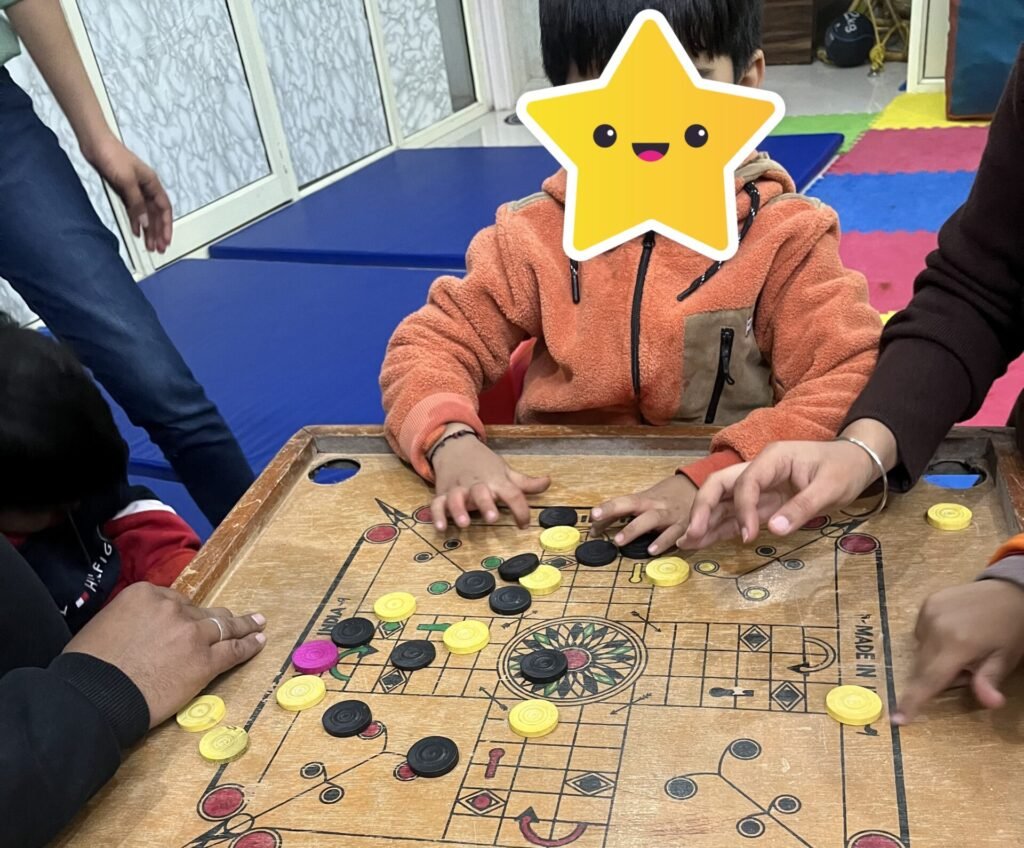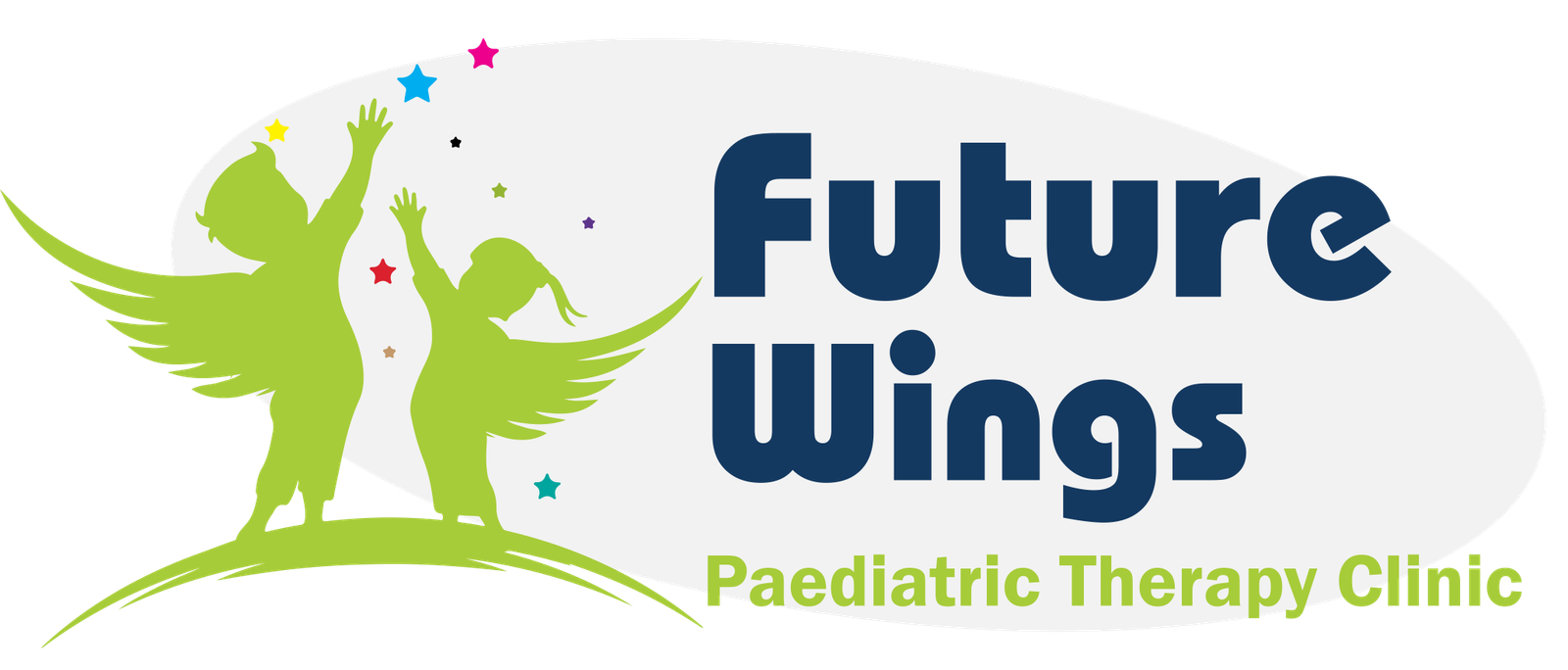Our Approaches and Interventions
We use various evidence-based approaches and intervention strategies to address a range of developmental, behavioural, and learning challenges in children, with a focus on building skills for independence, communication, and social engagement.
Applied Behaviour Analysis (ABA)
Applied Behaviour Analysis (ABA) is a therapeutic approach for children with autism and other developmental disabilities. It focuses on reinforcing positive behaviours and reducing negative behaviours through structured interventions.
ABA involves breaking down negative thoughts and thinking patterns, decluttering them, understanding the root cause and then applying small, manageable, and strategic tactics to address these challenges.
We use positive reinforcement, through which we create a behavioural pattern in the child by providing them a reward, to encourage and strengthen desirable behaviours.
This approach is highly individualized to meet the unique needs of each child and is effectively implemented in both one-on-one and group settings.
Autism Rehabilitation or Autism Therapy
Autism rehabilitation is a comprehensive, customised approach to supporting children with Autism Spectrum Disorder (ASD) in their development. It focuses on enhancing a variety of abilities that are essential for independence, social integration, and day-to-day functioning. Autism rehabilitation aims to give kids the skills they need to successfully navigate their surroundings, communicate, and build lasting connections.
Play and Group Therapy
A therapeutic approach that uses play and group interactions to help children express feelings, develop social skills, and problem-solving skills. In a supportive setting, children engage in structured activities that promote emotional expression, cooperation, teamwork, and conflict resolution. It helps them to build self-esteem, improve communication, and teach crucial skills like sharing, empathy, and collaboration. The therapist guides the group, ensuring that the activities align with each child’s developmental needs. This approach promotes trust, social connection, and emotional growth, making it an effective tool for children’s overall well-being.

Sensory Integration
An approach intended to improve children’s ability to respond to sensory information more effectively. Children with sensory processing impairments, who might struggle to filter and interpret sensory stimuli from their surroundings, benefit most from it.
Through structured activities, sensory integration therapy helps children regulate their sensory responses, improving their ability to engage with the world around them. This approach enhances motor skills, focus, and emotional regulation by helping children manage sensory sensitivities or over-sensitivities in a safe, controlled manner.
Handwriting Without Tears
An intervention that uses a systematic, step-by-step method to teach children how to write, focusing on improving motor skills and making writing easier. It works particularly well for kids who struggle with handwriting or developmental disabilities. The program uses simple, clear instructions and engaging activities to help children develop proper grip, letter formation, and writing fluency. It helps kids gain confidence and succeed in writing assignments by focusing on simplicity and enjoyment, which enhances their handwriting and fine motor abilities in general.
TEACCH (Treatment and Education of Autistic and Communication-Handicapped Children)
A systematic approach designed to support children with autism by providing visual supports and a predictable routine. This method divides tasks into smaller, more manageable chunks, which helps kids better comprehend and navigate their surroundings. TEACCH strongly emphasises individualized learning and uses visual timelines, unambiguous instructions, and regular routines to boost independence, increase communication, and lessen anxiety. It gives kids a sense of security and motivates them to work on projects more easily and comprehensibly.
Social Skills Training (SST)
A methodological approach that teaches kids how to read social signs and negotiate social cues. Through role-playing, modelling, and guided practice, SST teaches skills such as making eye contact, taking turns, reading facial expressions, and initiating conversations. Children with autism, ADHD, and other disorders that impact social communication can particularly benefit from this method. Through the development of these abilities, SST assists kids in forming deep connections, fostering better peer relationships, and gaining self-assurance in social situations.
Parent-Implemented Approaches
Strategies that empower parents to actively participate in their child’s therapeutic process. An example is Parent-Child Interaction Therapy (PCIT), which instructs parents on how to use particular therapy techniques to address behavior, communication, and emotional control in their children at home. These approaches provide parents with the skills and strategies they need to effectively handle difficult behaviors, enhance parent-child relationships, and reward positive behaviors. Children receive constant support at home and in therapy when parents are involved in the therapeutic process, which promotes greater long-lasting development and improvement.
Visual Supports and Schedules
Using visual aids to help children with special needs learn and behave, such as image timetables, social stories, and visual clues. Children with autism or communication impairments particularly benefit from this method since it makes routines, expectations, and tasks easier for them to understand systematically and understandably. By offering a consistent and understandable framework for kids to follow, visual aids foster greater independence and lessen behavioral issues while lowering anxiety, improving cognition, and improving communication. (such as visual signals, social stories, or image schedules) to help children with exceptional needs—particularly those with autism or communication disorders—learn and behave.
Montessori Method
A child-centered approach that prioritizes independence, hands-on learning, and self-directed activity. It encourages children to explore and learn at their own pace and abilities in a structured environment. The method is particularly useful for children with developmental delays and disabilities, as it provides individualized learning experiences that foster cognitive, motor, and social skills. Montessori classrooms feature specialized materials and activities that promote problem-solving, creativity, and self-regulation, allowing children to build confidence, develop independence, and achieve their fullest potential.
Cognitive Behavioral Therapy (CBT)
A therapeutic approach that focuses on addressing emotional and behavioral issues by identifying and changing negative thought patterns. It helps children recognize how their thoughts influence their feelings and behaviors and teaches them how to challenge and reframe these thoughts to develop healthier coping mechanisms. CBT encourages problem-solving skills, emotional regulation, and positive thinking, making it effective for children dealing with anxiety, depression, ADHD, and other emotional challenges. This approach empowers children to manage their emotions and behaviors more effectively, leading to improved mental well-being and resilience.
RDI (Relationship Development Intervention)
A family-based approach aimed at improving social engagement and emotional regulation, particularly for children with autism spectrum disorder (ASD). It focuses on enhancing the child’s ability to form meaningful relationships and engage in reciprocal interactions with others. RDI emphasizes guiding children through real-life experiences and fostering dynamic communication, helping them develop essential social and emotional skills. The approach encourages parents to actively participate by modeling and supporting these interactions, ultimately promoting greater emotional connection, independence, and social competence in children with ASD.
Speech-Language Therapy (SLT) Approaches
A range of methods, intended to help kids become better communicators. These methods concentrate on improving vocabulary, articulation, social interaction, and language development in general. Children with limited verbal communication may benefit from strategies such as Augmentative and Alternative Communication (AAC) systems, which enable them to communicate using technological gadgets, visuals, or symbols. Other strategies focus on increasing vocabulary, promoting successful social interactions, and improving speech intelligibility. Speech-Language Therapy (SLT) helps kids acquire the abilities necessary to interact with people in a meaningful way, communicate with confidence, and express their ideas and feelings.
Brain Gym
A movement-based strategy that improves focus, coordination, and cognitive function through easy physical activities. Children with learning difficulties, attention problems, and developmental delays benefit from the exercises’ stimulation of brain activity, which enhances their motor skills, memory, and focus. Through the use of movement, Brain Gym promotes more effective information processing in the brain, which improves learning and emotional control. By combining mental and physical activities, this method aims to help kids improve their everyday functioning and academic achievement.
Art Therapy
An expressive therapy that enhances a child’s mental, emotional, and social health by utilising the artistic process of creating art. Children are taught to process trauma, manage stress, and express emotions nonverbally using a variety of artistic mediums (such as painting, sculpture, and sketching).
For kids with emotional challenges, autism, PTSD, anxiety, and trauma, art therapy can be particularly helpful in fostering coping mechanisms, self-expression, and self-assurance.
Check out some of our kids enjoying Art Therapy sessions.
Note: If your child is showing signs of emotional distress or behavioural difficulties, early support can make a world of difference. Connect with us to learn how we can support your child’s journey to emotional resilience, one step at a time.
Led by Dr. Dinesh, our team creates personalised therapy plans rooted in structure, empathy, and patience. Whether your child is just beginning their journey or continuing to build on their progress, we are here to walk alongside you—every step of the way.

